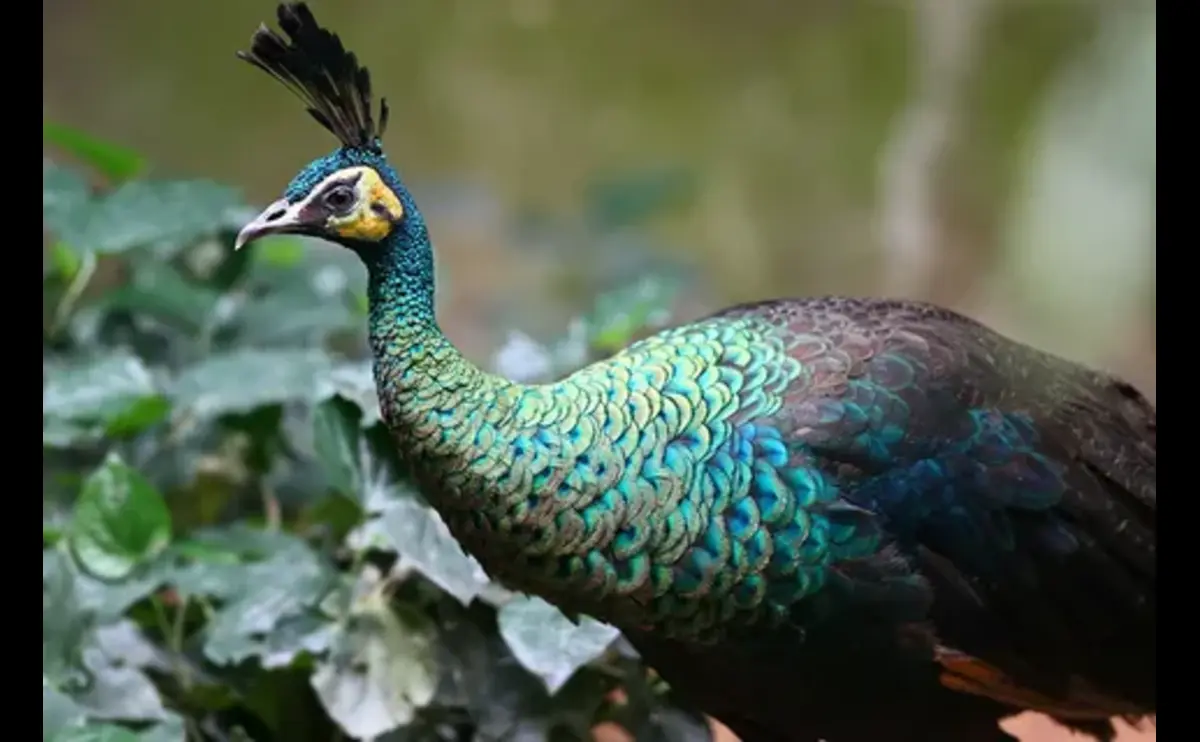Blog
Types of Peacock: A Complete Guide to Majestic Diversity

Three commonly accepted types of peacock exist, the Indian Blue Peacock (Pavo cristatus), the Green Peacock (Pavo muticus), and the Congo Peacock (Afropavo congensis). The species boasts distinctive colors, habitats, and a unique conservation status. This guide helps bird lovers identify these species, learn about their unique characteristics, and appreciate their ecological and cultural significance.
Overview of Peacock Species
Indian Blue Peacock (Pavo cristatus)
Distribution: Indian Blue Peacock is a native species in India and Sri Lanka, and is readily identified and popular throughout the cultures.
Status: IUCN as Least Concern because populations are stable.
Description: The spectacular blue with iridescent layers and the classic train with eye-like dots.
“Indian blue peafowl are omnivorous and opportunistic feeders, consuming everything from seeds and greens to insects, small amphibians, and even reptiles.” – Smithsonian National Zoo Learn more

Green Peacock (Pavo muticus)
Distribution: Green Peacocks occur in Myanmar, Cambodia, and Indonesia.
Status: Endangered, having fewer than 20,000 individuals, as a result of habitat loss and hunting.
Description: Metallic emerald and blue; long train compared with the Indian species.

Congo Peacock (Afropavo congensis)
Distribution: Endemic in the rainforests of the Democratic Republic of the Congo.
Status: Listed as Vulnerable.
Description: Finer plumage, copper-blue, train shorter than other species.

Wild vs. Captive Variations
Natural Color Morphs
The application of selective breeding to the Indian species has given rise to variations of colors such as the white, pied, and black-shouldered peacocks, characterized by the striking patterns, but not species.
Conservation and Ecological Role
- Indian Blue Peacock is a strong species that survives in the landscape dominated by humans, yet it is a culturally guarded species.
- Deforestation and the wildlife trade are more threatening to the Green and Congo Peacocks.
- Peacocks are omnivorous: wild studies show 91% of their diet is plant matter, and the rest includes insects and small vertebrates.
Source: Indian Birds journal
“Wild peafowl diets are dominated by plant matter (91%), with the rest composed of animals like insects and small vertebrates.” — Indian Birds journal, See the study
The Importance of Growth Stage Awareness
Awareness of peacocks of fluff-feathered chicks and train-sporting males is the key to breeding and conservation. Age determines the quality of plumage, mating success and health care choice.
Concluding Ideas – Recognize, Respect, and Preserve Peacock Diversity.
Both kinds of peacocks are symbols of marvelous beauty and ecological meaning. The common Indian Peacock, threatened Green Peacock, and elusive Congo Peacock are, in a way, each a contributor to biodiversity. Through the application of scientific knowledge, conservation can be done effectively.
Take Action Today: Learn more about caring for and preserving these species. Visit our in-depth guide on peacock growth stages to follow their development from chick to majestic adult.
FAQs About Peacock Types
What Is the Number of Species of Peacocks?
Three established species and several bred color morphs of the Indian Blue Peacock.
Which Is the Rarest Type of Peacock?
The Congo peacock is limited to rich rainforests and is seldom seen.
Which Is the Species With the Longest Train?
The Green Peacock, a more comfortably-dressed and long-tailed train than its Indian companion.


